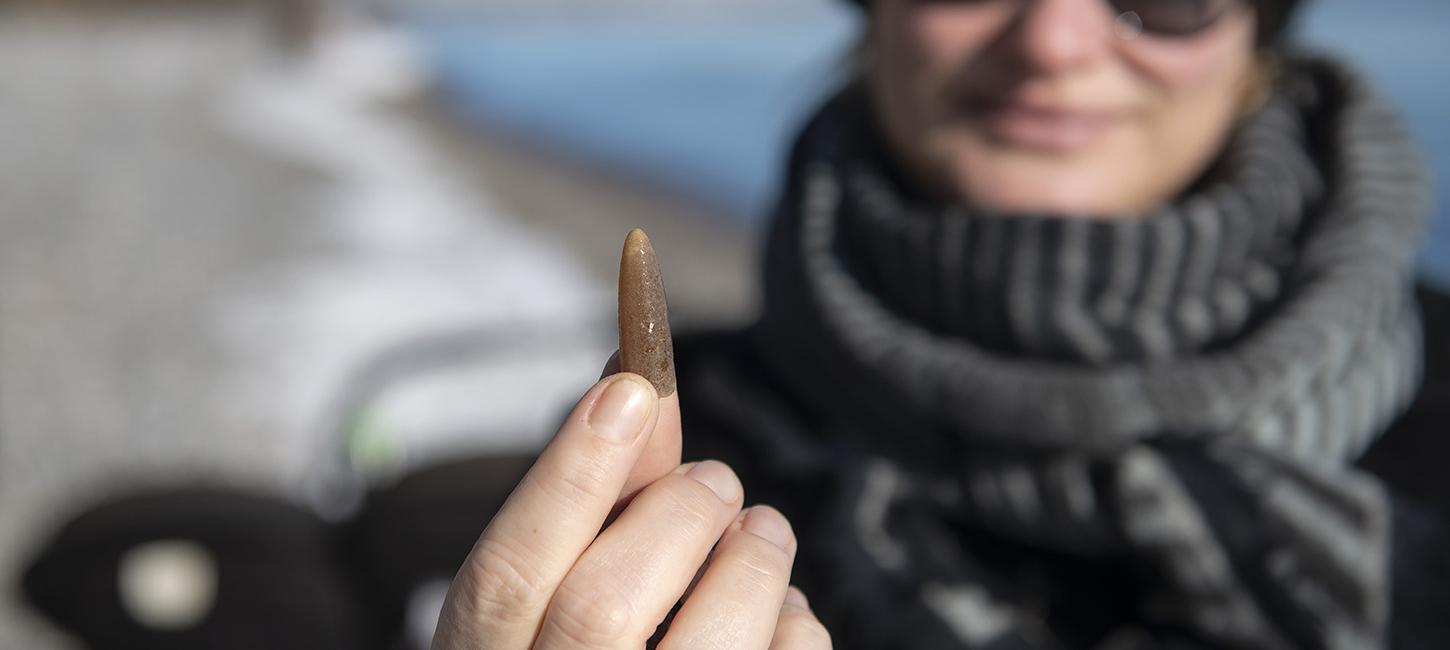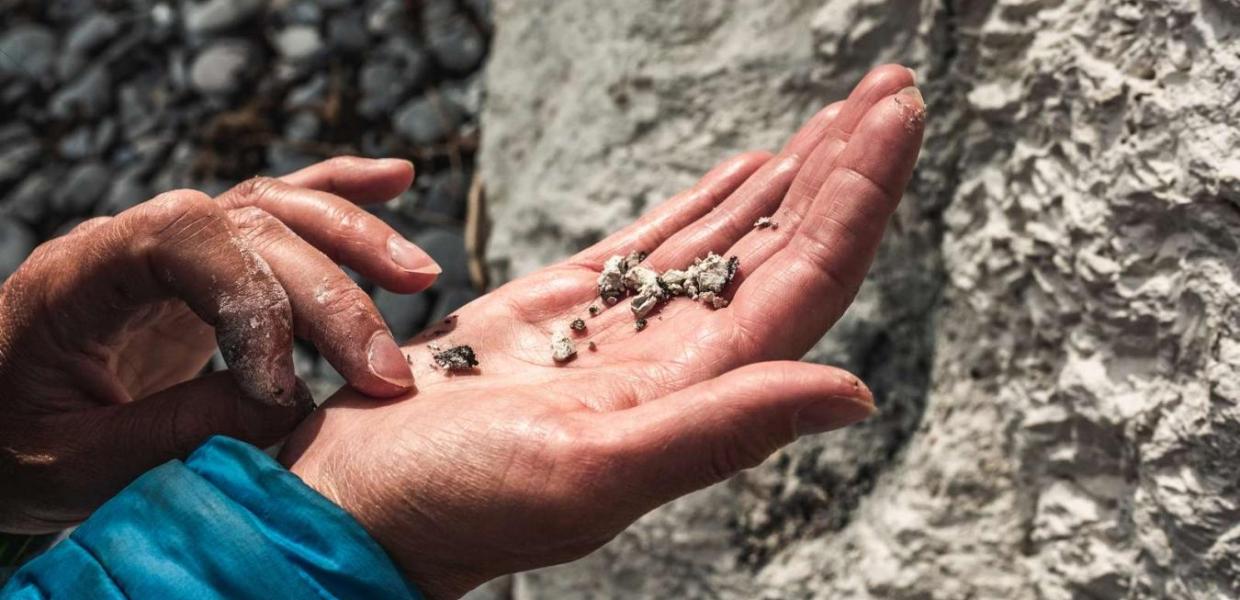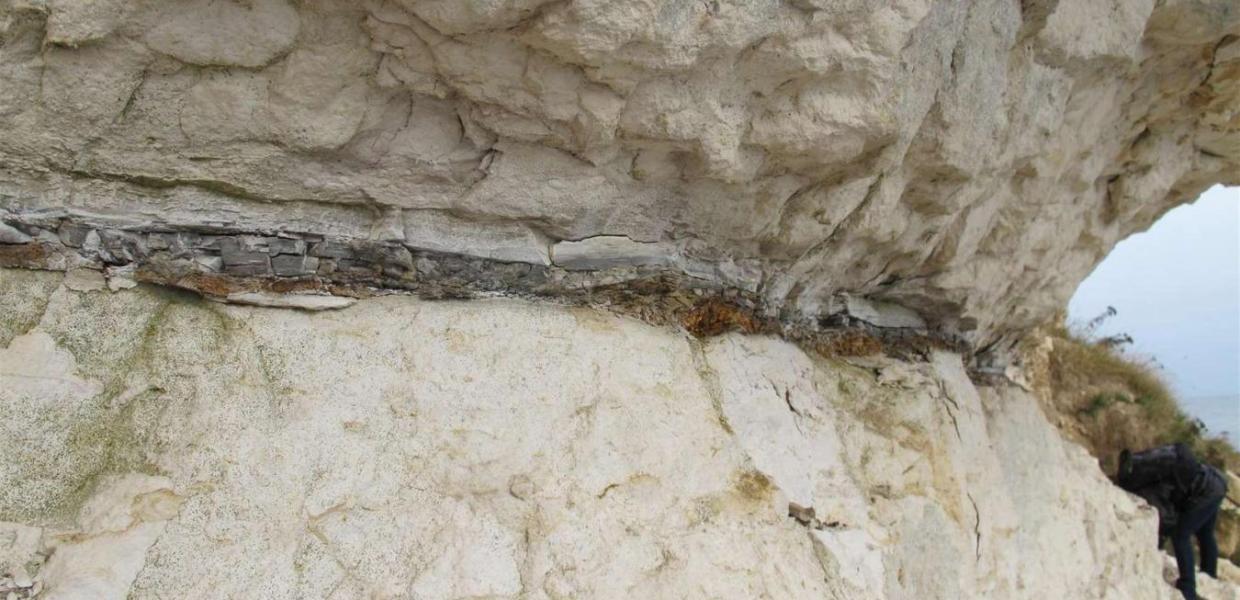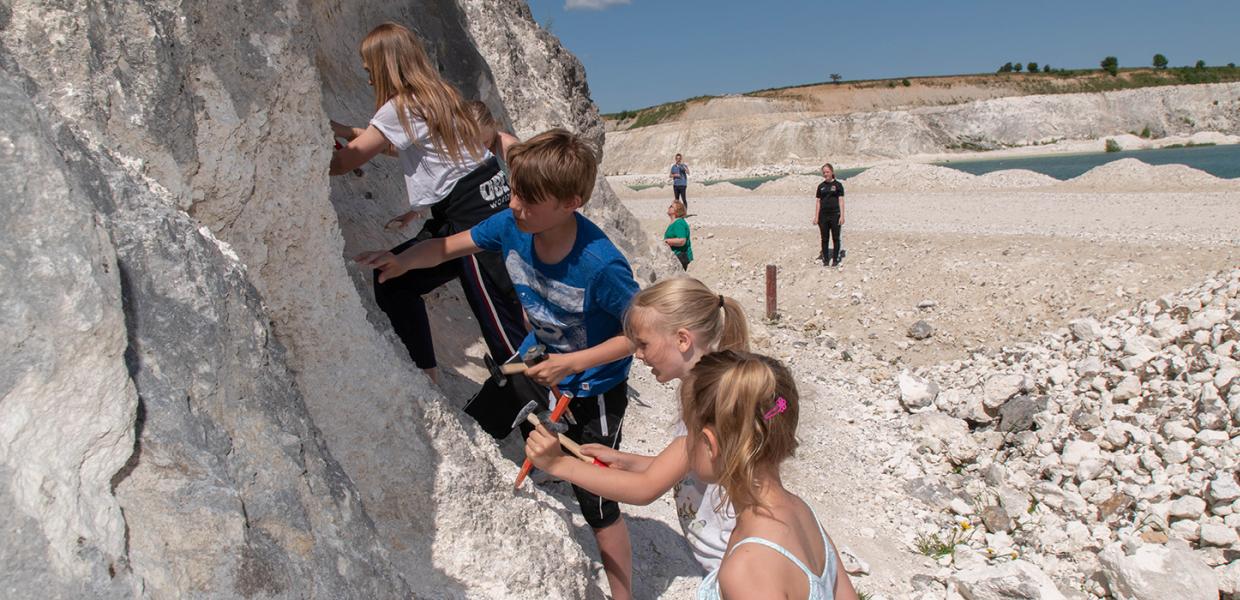
Go fossil hunting!
Go fossil hunting in South Zealand & Møn’s huge chalk layers and find relics of the past that have been there for millions of years.
Petrified history
Approx. 70 million years ago, cephalopods, sea urchins, mussels, algae and many other animals lived around Møns Klint, becoming embedded in the chalk of the cliffs over time. Many of the species are now extinct, but you might still be lucky enough to find fossils in the lime-rich soil – e.g. belemnites, which are part of the carapace of an octopus, as well as sea urchins.
However, remember that you are not allowed to use a pick or other tools when you go fossil hunting around Møns Klint, which means that you can only collect visible finds.
GeoCenter Møns Klint offers guided fossil hunts, which are conducted daily during the high season, etc. See moensklint.dk for more information.
You are allowed to keep what you find. If you are unsure about what you have found, you are welcome to contact the nature guides at GeoCenter Møns Klint, whom you can ask for at the reception.
Photo:VisitSydsjælland-Møn
Find treasures on Stevns Klint
Around 65 million years ago, the Stevns Klint cliffs were covered by the sea, just as most of Northern Europe was. Therefore, we might be lucky enough to find fossils in the chalk and limestone dating all the way back to this period. Among other things, it’s possible to find the fossilised remains of snails, sea urchins and starfish, but sharks and octopuses also lived in the waters, which is why it’s possible to find remnants of these here too. At the geological museum in Faxe, GeoMuseum Faxe, you can see a beautiful collection of fossils.
Between the chalk and the limestone is fish clay – a thin layer of grey clay. The fish clay bears evidence of a catastrophic event that impacted the entire Earth, wiping out over half the plant and animal species of the time – including the dinosaurs.
You are not allowed to use a pick or other tools when you go fossil hunting around Stevns Klint, which means that you can only collect visible finds.
Photo:VisitSydsjælland-Møn
Fossil hunting in Faxe Limestone Quarry
Discover Faxe Limestone Quarry – a piece of Danish history that has been of great importance for many millions of years.
The limestone quarry is the bottom of an ocean that existed 63 million years ago. This means that today you can find remains of crocodiles, giant sharks and other exotic animals that lived at that time. Today, the limestone quarry is very popular among families with children who want to go fossil hunting.
At Geomuseum Faxe, you can rent a hammer and chisel or go on one of the museum’s organised guided fossil hunts.
Photo:VisitSydsjælland-Møn
Holtug Chalk Quarry
Until 1972, Holtug Chalk Quarry was an active limestone and chalk quarry, and it is now a protected “Natura 2000 area”. You can explore the area and find protected and rare plants as well as amphibians and reptiles. The chalk quarry is also a good place to find fossils and mineralised organisms.
Remember: Fossils are relics from prehistoric times, and it’s important that you embark on your fossil hunt with a respect for, and understanding of, the guidelines of what you can collect and take home. Read more here


